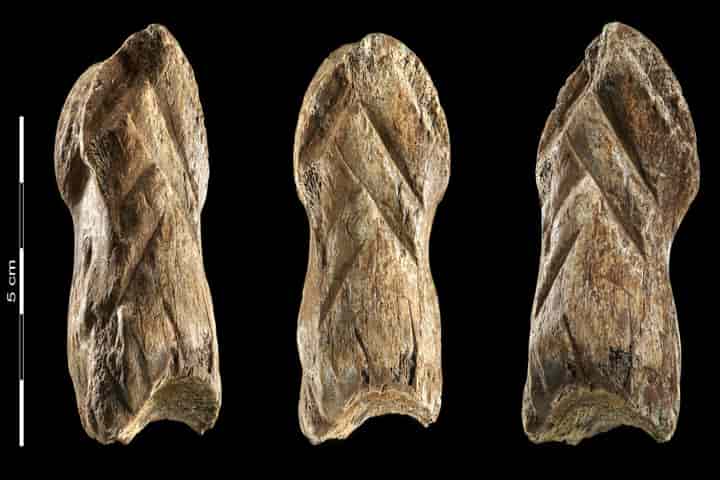Generally considered to be poor cousins of modern human beings, devoid of the intellect and aesthetic sense, Neanderthal – the closet relative to humans genetically — have decided to spring a surprise!
With the first fossil of Neanderthals discovered in the 19th Century, the picture that they drew before everyone’s eyes was one of a primitive hominin. Though it was known that they were capable of making tools and designing weapons, the question that came to mind was could they make jewelery, ornaments or art.
According to sciencedaily.com a team of researchers led by the University of Göttingen and the Lower Saxony State Office for Heritage have looked at a new find from the Unicorn Cave (Einhornhöhle) in the Harz Mountains very closely and concluded that Neanderthals had remarkable cognitive abilities. This study’s results have been published in Nature Ecology and Evolution.
New excavations have been carried out at the Unicorn Cave since 2019 in collaboration with the Unicornu Fossile Society and for the very first time, cultural artefacts have been uncovered at the cave’s ruined entrance area.
Also read: Ancient ostrich eggshells dug up in South Africa shed light on climate change
In what was found among the preserved remains from a hunting expedition was an inconspicuous foot bone. This is turned out to be the sensational find. On clearing the soil on the bone, what emerged was an angular pattern of six notches.
The excavation leader, Dr. Dirk Leder of the Lower Saxony State Office for Heritage told sciencedaily.com: "We quickly realised that these were not marks made from butchering the animal but were clearly decorative.” These carved notches were then sent for 3D microscopy at the Department of Wood Biology and Wood Products at Göttingen University.
In order to verify the authenticity of the piece they discovered the team did scientific comparison by doing experiments with the foot bones of the present day cattle. It was found that the bone had to be boiled to allow carving of the pattern on the soft bone surface with tools made from stone. This work would take nearly an hour and thirty minutes.
Also read: The strange case of a dinosaur species which reduced in size and fed on termites!
As to the original bone piece which was discovered, it was identified as that of a giant deer (Megaloceros giganteus).
According to Professor Antje Schwalb from the Technical University of Braunschweig, "It is probably no coincidence that the Neanderthal chose the bone of an impressive animal with huge antlers for his or her carving.” Schwalb is involved in the project.
The dating of the bone was done by a of Leibniz laboratory at Kiel University and using radiocarbon dating technology they dated it at over 51,000 years. For the first time the direct dating of an object carved by Neanderthals has been done. So far before this, some ornamental objects from the time of the last Neanderthals in France were known. These finds, however, which have been placed as 40,000 years old, are considered by many, as copies of the pendants made by the atomically modern humans, who had by this time, spread to parts of Europe. From the cave sites of modern humans on the Swabian Alb in Baden-Wurttemberg, decorative objects and small ivory sculptures have survived, which were of the same time
Also read: Mummified falcons and shrews reveal that Egypt was wetter than what it is today!
Analysing the find in the Unicorn Cave, project leader Professor Thomas Terberger from Göttingen University's Department for Prehistory and Early History, and the Lower Saxony State Office for Heritage observed: “The fact that the new find from the Unicorn Cave dates from so long ago shows that Neanderthals were already able to independently produce patterns on bones and probably also communicate using symbols thousands of years before the arrival of modern humans in Europe. This means that the creative talents of the Neanderthals must have developed independently. The bone from the Unicorn Cave thus represents the oldest decorated object in Lower Saxony and one of the most important finds from the Neanderthal period in Central Europe."
Praising Lower Saxony’s archaeologists, the Lower Saxony's Minister of Science Björn Thümler remarked: "Lower Saxony's archaeologists are always making discoveries that rewrite the history books. Now, research in the Unicorn Cave has revealed that the Neanderthals produced elaborate designs even before the arrival of modern humans — yet another important new finding that completely revises our picture of prehistory."




















